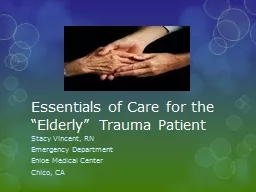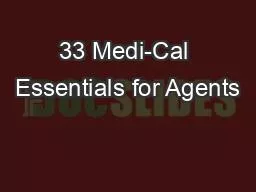PPT-Essentials of Care for
Author : briana-ranney | Published Date : 2016-04-02
the Elderly Trauma Patient Stacy Vincent RN Emergency Department Enloe Medical Center Chico CA The Geriatric Tsunami 2000 population gt65 124 2050 207 Trauma 5
Presentation Embed Code
Download Presentation
Download Presentation The PPT/PDF document "Essentials of Care for" is the property of its rightful owner. Permission is granted to download and print the materials on this website for personal, non-commercial use only, and to display it on your personal computer provided you do not modify the materials and that you retain all copyright notices contained in the materials. By downloading content from our website, you accept the terms of this agreement.
Essentials of Care for: Transcript
Download Rules Of Document
"Essentials of Care for"The content belongs to its owner. You may download and print it for personal use, without modification, and keep all copyright notices. By downloading, you agree to these terms.
Related Documents














